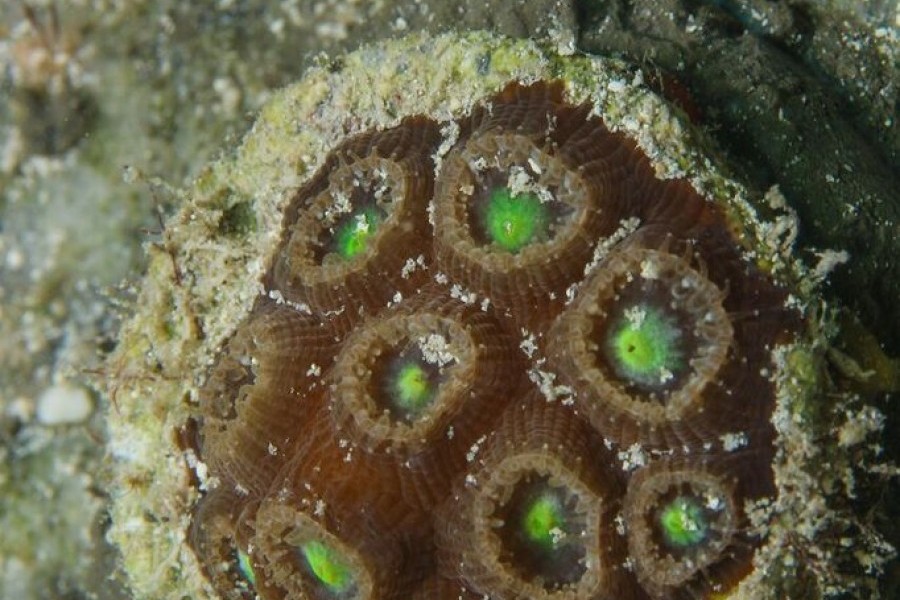Coral restoration ongoing in Key West

A reef building coral fragment planted in the Florida Keys waters by Mote Marine Laboratory scientists. Credit: Conor Goulding
Mote Marine Laboratory scientists are working with volunteers to restore corals this month in waters of Fort Zachary Taylor Historic State Park in Key West, Florida. Pre-registration is required and details are below.
This is the second summer of a partnership project by Mote, Florida Park Service, the National Oceanic Atmospheric Administrations (NOAA)’s Florida Keys National Marine Sanctuary and the Monroe County Tourist Development Council to restore corals in park waters while engaging and educating volunteer citizen scientists. All work is permitted by NOAA and the Florida Park Service.
“The Florida Park Service is pleased to partner with Mote Marine Laboratory and others on this project,” said Anthony Knott, park manager at Fort Zachary Taylor Historic State Park. “Visitors to the park always look for fun ways to explore the natural environment. A snorkeling trail will provide a terrific opportunity for hands-on learning.”
In summer 2016, project partners planted about 5,500 coral fragments into park waters. They have survived at a rate of nearly 90 percent after one year.
Science-based coral reef restoration is a major priority at Mote, which is expanding these efforts at its new Elizabeth Moore International Center for Coral Reef Research & Restoration (IC2R3), opened May 2017 at Mote’s existing Summerland Key campus.
Mote’s signature reef-building technique, “re-skinning,” is based on observations that very small fragments of brain, boulder and star coral can grow relatively quickly and fuse together in Mote’s coral nursery. In the wild, these small fragments are outplanted with the goal of covering dead coral skeletons with new, living tissue.
Mote scientists are working to restore large areas of these corals in one to three years — instead of the hundreds of years it might take for natural recovery. Using research infrastructure funded by the National Science Foundation, Mote scientists are working to identify a variety of genetic strains of corals that are more resilient and resistant to disease, warming ocean temperatures and ocean acidification — important traits for restoration success.
In the current project, corals rescued by NOAA and propagated by Mote are being restored in the same general area where they were initially found.
“This project highlights Mote’s coral reef restoration efforts and the incredible partnership it takes to accomplish our goals,” said Dr. David Vaughan, Executive Director of Mote’s IC2R3. “Coral reefs are rapidly declining because of various human impacts, and we can’t let these impacts completely destroy a once beautiful and thriving ecosystem that has given so much to us. We want the public to gain a broader understanding of Mote’s coral research and restoration methods, threats to coral reefs, and the efforts of NOAA, Florida’s Department of Environmental Protection, and the Florida Park Service — our valued partners in conservation, research and restoration of coral reefs.”
Coral reef ecosystems provide vital shelter, feeding and breeding habitat for myriad fish and invertebrates such as crabs, shrimp and lobsters. Reef structures also help protect shorelines during tropical storms and hurricanes.
By supporting seafood production, diving, snorkeling, tourism and other economic drivers, Florida’s reefs are estimated to value $8.5 billion and generate over 70,000 jobs.
To educate visitors, the current project at Fort Zachary Taylor Historic State Park features a publicly accessible coral restoration area represented by educational signs on shore and at NOAA’s Florida Keys Eco-Discovery Center in Key West.
This work is being conducted under NOAA Florida Keys National Marine Sanctuary permit 015-134-A2.